
Videoheaven. Courtesy of IFFR
Just before the 54th International Film Festival Rotterdam kicked off, festival managing director Clare Stewart said IFFR secured funding for the next four years while noting that the “cultural purse is tightened,” with cuts to other cultural organizations under discussion. It is not clear whether IFFR’s security has come at the cost of other organizations. No budget for this year’s festival has yet been reported, either, though external signs point to an increase compared to last year: the festival has established a grant that will award half a million euros for five short films by displaced filmmakers; the size of the slate has grown by 58 films, to 482 (234 features and 248 short/mid-length; 136 retrospective/archival to 346 new films); press accommodations were a bit more generous; and the number of films screening on celluloid was substantially higher.
The last of these changes is especially heartening. Besides frequently unearthing underseen gems, IFFR’s celluloid repertory screenings demonstrate the institution’s interest in film art and film history for their own sake, a welcome respite from the politics and buying and selling of “cultural products” that so often threaten to dominate film festivals. It’s fitting, then, that this edition’s most cinephilic film, Alex Ross Perry’s Videoheaven, is likely as responsible as any increased festival budget for the comparative abundance of celluloid. Videoheaven provided the impetus for the Hold Video in Your Hands section, spotlighting movies about analog formats and video stores, many of which screened on film.
Grateful to Videoheaven for allowing me to indulge in my celluloid fetishism and impressed by Perry’s playful and productive send-up of music docs and biopics in Pavements (2024), I happily carved out three hours for the essay film. Based on an unpublished, approximately 20 page chapter that Daniel Herbert initially intended for his 2014 book Videoland: Movie Culture at the American Video, Videoheaven outlines the history of the video store, from its independent beginnings as a community haven to its corporate takeover, “family-friendly” rebranding, and its eventual demise. It also contains in-depth investigations into the meaning and depiction of the store clerks, pornography, and Troma films—which feature heavily in the background of countless video store scenes—in the video stores of fiction, carried by Maya Hawke’s tight, controlled voiceover.
Videoheaven’s three-hour runtime may alienate some. Certainly, it was a hot topic in both pre- and post-screening discussions among viewers. The film’s argument is recursive at times, overindulging in background information and analyzing the clerk figure sufficiently at one point only to return in greater depth much later. There are also stretches where successive clips play without any voiceover, acting only as additional examples of a point illustrated by the first clip. And yet, any academic argument is always bolstered by volume, and a persuasive argument is more important than a succinct one. Nobody could ever accuse Videoheaven of cherry-picking clips from ~170 films (some tantalizingly obscure) to fit a preconceived narrative. The length also highlights the extent to which cinephilia constitutes a community and sense of belonging. Sitting alongside fellow movie lovers for three hours while being actively encouraged to think about and appreciate what you have in common is as delightful as it is rare, and the presence of Hawke as our guide preemptively dispels any objections that this sort of passionate cinephilia is necessarily a boys club (though one may wonder how an additional film chapter on gender and the video store may have played out). At any rate, the audience for this kind of project is self-selecting: those who find the subject matter and its runtime to be solipsistic and daunting will not be won over, but those whose interest is piqued will be rewarded.
While the Hold Video in Your Hands series was a welcome one-off, Cinema Regained is IFFR’s perennial section dedicated to hardcore cinephilia, frequently pairing documentaries about obscure filmmakers or movements with films of that era. It can be something of a crapshoot, but the reliably fascinating archival material often makes for highlights. Last year’s La Primera Mirada, about films made at Franco’s film school, was a revelation, while docs about Luis Ospina and especially Antoinetta Angelidi—plus their paired repertory titles, Pura Sangre (1982) and Topos (1985)—were bright spots in the festival. This year, the stronger slate of premieres mostly pulled me away from Cinema Regained documentaries. But given the paucity of strong English-language scholarship on its subject, I could not miss The Lilac Wind of Paradjanov, about the great Sergei Parajanov and directed by the acclaimed Uzbek-Soviet director Ali Khamraev.
I am fortunate to have set foot in Yerevan’s Parajanov Museum twice, and its treasures are unmissable for anyone who has marveled at the tableaux of The Color of Pomegranates (1969). Parajanov’s collages, the surrealistic juxtapositions of his dioramas, his remarkable eye for color, and his careful arrangement of objects—each made all the more intoxicating by his delicate embroidery—elucidate a distinct cinematic aesthetic that biography alone cannot encapsulate. Whether assembled lovingly from troves of photographs and mementos or in the poverty of a prison cell, Parajanov’s handiwork is intoxicating. Unfortunately, watching Lilac Wind, one will learn nothing of the crafts and folk art that inspired Parajanov’s work, and no mention is made as to how or whether the modernist art movements of the early 20th century that his work occasionally calls to mind were meaningful to him. Instead, it treats biographic detail as sufficient explanation for artistry, and even the occasional shot of the Museum’s treasures, inaccessible to so many, cannot invigorate this portrait of a subject too frequently reduced to a brand. Those looking for insight rather than recapitulation will be disappointed.
A more exhilarating return to the archive arose courtesy of Michael Almereyda and Courtney Stephens’s John Lilly and the Earth Coincidence Control Office, which refracts the life of the marine biologist-turned-psychonaut, from his breakthrough research on dolphin communication to his LSD indulgence and progenitorial New Age proclamations. The film proceeds through a series of cultural touchstones more recognizable than Lilly’s own name—the Drake Equation, the “Save the Whales” campaign, National Geographic’s Songs of the Humpback Whale record, Ken Russell’s Altered States, and the Ecco the Dolphin video games, to name but a few. The archival assembly and voiceover (plus a few interviews) present this narrative with humor and erudition, and it suggests countless subjects of further inquiry for the curious viewer. A personal favorite is when Lilly is taken by the suggestion that humans’ advanced linguistic capabilities make us comparatively bad at understanding any aspect of interpersonal communication that cannot be verbalized. That makes his study of dolphins exceptionally challenging: in essence, he is trying to decipher a uniquely sophisticated species’ communication despite being of a species defined by uniquely unsophisticated communication.
This framework seems to haunt Lilly as he turns to drugs to try to tap into communication signals that his sober brain cannot, but it also haunts the film in its choice of music, a sonic collage of works by Brian McOmber (of Dirty Projectors, and composer for Trey Edward Schults’s films) and others. The electronic music on the soundtrack is important because of its relationship to the marine mammal vocalizations that, on the surface, it resembles. Though not mentioned in the film, the BBC Radiophonic Workshop was the progenitor for much of this music, especially with its work in the late ’50s and the ’60s—precisely when, across the pond, Lilly was studying dolphin communication. Working in the tradition of musique concrète, Delia Derbyshire, Daphne Oram, John Baker, and other members of that pioneering sound effects unit (best known for the Doctor Who theme) saw electronic signals as music precisely because—contra dolphin and whale songs—they lacked a referent and did not “represent” anything.
The proximity—both in their aural character and in their placement within the film—of sounds that function quite literally as direct communication between marine mammals and of sounds defined by their lack of function or meaning reminds us that all sound, and indeed art, is a way to express what verbal language cannot. Rather than looking merely at marine mammal vocalizations and Lilly’s attempts at extraterrestrial telepathy, John Lilly and the Earth Coincidence Control Office excavates the idea of communication itself. (It is worth noting that the film is not finished; in the intro and Q&A, the directors noted that some of the sound effects and music are temp and were keen to hear our thoughts on the film’s pacing. Let’s hope the changes to the former aren’t too drastic.)
Outside the archive, I was enchanted by Gods of Stone, Ivan Castiñeiras Gallego’s examination of life in a town on the Portugal-Spain border. Castiñeiras made the film over 15 years, and one of the pleasures of watching the film is recognizing in the film the inscription of its own production. It starts in 16mm black-and-white before transitioning abruptly and permanently to color, an indication of the project’s increased funding. Similarly, it begins with a voiceover detailing the history of the locale, settles into a more ethnographic mode, and then follows one teenage girl, shifts indicating that Castiñeiras slowly earned the trust of the community over the course of his project and was rewarded with more intimate access to their lives.
This makes for an arguably unfocused experience, but Castiñeiras finds a narrative justification for his formal shifts. The long-shuttered mines near his town, a once-lucrative source of tungsten, might soon be reopened by multinationals looking for quartz, whatever tungsten remains, and anything else besides. Until this event, the film concerns itself with cultural tradition and history, but the village’s discussion about the potential reopening of the mine (delivered by a man from a nearby village who has already seen it wreck his community’s way of life) marks a turning point. Subjectivity is the great modernist subject, so it’s appropriate that the transition from tradition to modernity within the village find its formal counterpart in the shift in focus from the community as a whole to an individual within it. Among the first things we notice about our new subject is her clothing, branded shirts and sweaters emblazoned with NYU, MTV, Magic: The Gathering, and Harry Potter’s Ravenclaw house crest. Such details remove from Castiñeiras the burden of overexplaining the conflict between two ways of life. Gods of Stone instead unfolds patiently but knowingly. It gives the audience exactly enough to make sense of the changes we see, and—thanks again to the analog format—looks beautiful doing so.
Gods of Stone was a highlight, but it was sidelined in the non-competitive Bright Future category rather than the more prestigious Tiger competition. Though colleagues agreed the competition films were stronger than in recent years, I saw just one, Fiume o Morte! As luck would have it, however, it was the favorite of both FIPRESCI and the Tiger Competition jury (the latter, per one juror, by overwhelming consensus). The film highlights the 1919-1920 period when the fascist Gabriele D’Annunzio governed the Italian city of Fiume (today Rijeka, Croatia) as the self-proclaimed Italian Regency of Carnaro. We quickly learn, first by in-camera comparisons of present-day sites to century-old photographs, then by interviews with locals, that D'Annunzio is relatively little-known even in Rijeka, but many of the historically significant locations are instantly recognizable to this day. So begins director Igor Bezinović’s quest to recruit locals to recreate historical events and photographs—from the initial takeover, which saw D’Annunzio enter the city with 20 truckloads of legionnaires, to slice-of-life portraits of soldiers eating lunch—of the short-lived Italian Regency. Bezinović’s on-camera casting is humorous, and his interviews and archival digging resurface an obscure but significant historical event that heavily influenced Mussolini. Some actors speak on-camera in the Fiuman language, and how the national and linguistic distinctions shape locals’ knowledge of Rijeka’s history emerges thanks to Bezinović’s commitment to highlighting his own process.
Despite the gravity of its topic, Fiume o Morte! is modest in its presentation. Much of its 108-minute runtime is a procession of photographic reenactments, each distinguished only by the mildly humorous occurrence during its staging, but the film’s best moments make salient political observations. In one, Bezinović trains his camera on a port that is used today by multinational corporations and frequented by international tourists. It’s to the film’s credit that it refuses to highlight the irony in how the same sites embody D'Annunzio’s fascism as well as contemporary global capitalism or in how much of the world (including southern Europe) is creeping back to the fascism that, in location after location, is “restaged” with startling accuracy (almost, the viewer might think—with no prompting from the film—as if it never left). Still, as commendable as Bezinović’s trust in his audience and his privileging of site and language rather than received historical narratives are, his recreations tend to reiterate rather than expand on his thesis.
It’s tempting to pick nits about the relative merits of prizewinners and other films, and even more tempting to take a handful of the 346 new films as somehow indicative of the festival as a whole, but the truth is that a slate the size of IFFR’s can make proclamations about its strength difficult: two different attendees can carve distinct paths and have dissimilar takeaways. That’s one reason why a festival is more than just the films one watches. Remote coverage is no substitute for being on the ground with one’s peers, and it’s easy to forget that just a few years ago, when festivals were covered by remote press, targeting digital audiences, and facing severe budget cuts, nobody was really sure what festivals would look like in the future. To that end, it’s gratifying that, after last year’s whispers among the press about whether the festival was still worth attending, this year provided cause for higher spirits. I was not alone in noting an overdue post-pandemic rebound, and even fellow celluloid fetishists sometimes opted for contemporary cinema over 16mm and 35mm repertory offerings. The old films were there for us, but they were no longer a necessary refuge; the new films offered ample opportunity to indulge our cinephile fancies.
Forrest Cardamenis is a film critic based in Astoria, New York. He received an MA in cinema studies from NYU, and his writing has featured in a variety of publications, including Reverse Shot, MUBI Notebook, and Filmmaker.




